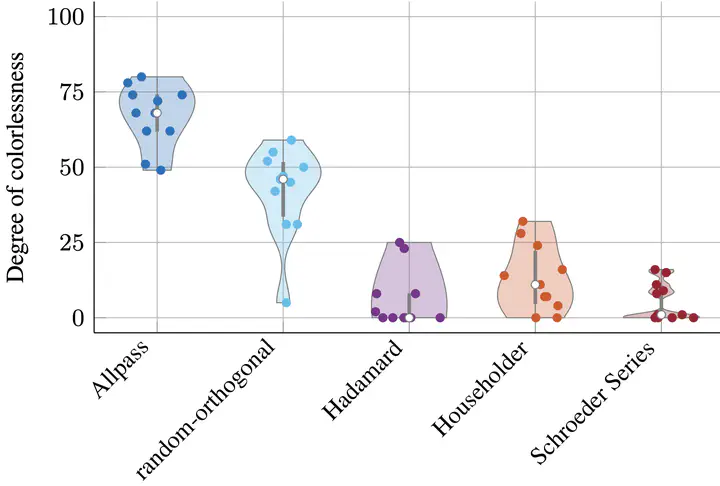
Abstract
A method to generate and evaluate colorless artificial reverberation with feedback delay networks (FDNs) is proposed. The coloration of the reverberation tail is quantified by the modal excitation distribution derived from the modal decomposition of the FDN. The colorless FDN is designed to be allpass and homogeneously decaying such that the corresponding narrow modal excitation distribution leads to a high perceived modal density. The modification alters only the standard FDN gains, and no additional processing is introduced. Three listening tests were conducted to demonstrate the correlation between the modal excitation distribution and the perceived degree of coloration. A fourth test shows a significant reduction of coloration by the proposed FDN. The colorless FDN presents a new baseline structure for neutral reverberation without any extra processing and computational cost.
Listening Test
Below are the listening test samples used in the perceptual evaluation of the reverberation signals. For more details on the generation, please see the accompanying paper.
Test 1
Test 2
Test 3
Test 4
Credits
Trackswitch.js was developed by Nils Werner, Stefan Balke, Fabian-Rober Stöter, Meinard Müller and Bernd Edler.